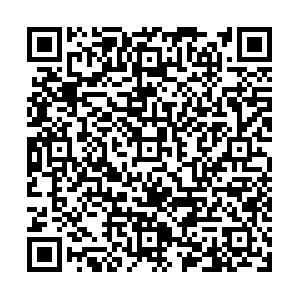Observation on the application effect of continuing care based on WeChat platform in patients with gastrointestinal tumors using PICC
-
摘要:
目的 探讨微信平台在消化道肿瘤化疗患者经外周静脉置入中心静脉导管(peripherally inserted central catheter,PICC)延续护理中的应用效果。 方法 收集2017年10月—2019年10月中国人民解放军联勤保障部队第901医院肿瘤科收治的因恶性消化道肿瘤需进行PICC置管患者102例,采用随机数字表法分为观察组与对照组,每组51例。对照组给予常规护理模式,观察组在对照组的基础上以微信平台提供专业指导进行延续性护理干预,共计干预16周,观察2组患者的导管留置时间及在整个干预期的并发症发生率,并在干预结束后进行各项满意度调查,统计干预前后2组患者的自我管理能力并分析。 结果 观察组患者导管留置时间[(167±32)d]明显长于对照组[(121±25)d];观察组PICC相关并发症静脉炎(P=0.038)、移位和堵塞(P=0.029)、感染(P=0.046)发生率低于对照组;观察组患者对于服务态度(P=0.035)、技术水平(P=0.025)、关心程度(P=0.008)、宣传教育内容及频率(均P<0.001)的满意度均高于对照组;观察组患者干预后的自我管理能力有明显提升(P<0.001),干预后观察组患者自我管理能力也优于对照组(P<0.001)。 结论 在延续护理中使用微信平台有利于肿瘤患者知晓PICC相关知识,可以减少相关并发症发生,提高患者及家属的满意度和患者的自我管理能力。 -
关键词:
- 微信平台 /
- 经外周静脉穿刺中心静脉置管 /
- 延续护理 /
- 消化道肿瘤
Abstract:Objective To explore the application effect of WeChat platform in PICC continuous care for patients with gastrointestinal cancer chemotherapy. Methods The 102 patients with PICC intubation gastrointestinal tumors in our hospital from October 2017 to October 2019 were divided into observation group and control group by random number table, with 51 cases in each. The control group was given conventional nursing mode, and the observation group provided professional guidance on the WeChat platform for continuous nursing intervention on the basis of control. A total of 16 weeks of intervention were conducted to observe the catheter indwelling time of the two groups of patients and the expected incidence of complications throughout the intervention. After the intervention, the satisfaction was investigated, and the self-management ability of the two groups before and after intervention was analyzed. Results The catheter indwelling time in the observation group [(167±32) days] was significantly longer than that in the control group [(121±25) days]. The PICC-related complications of the observation group were phlebitis (P=0.038), displacement and blockage (P=0.029), infection (the incidence of P=0.046) were lower than that of the control group. Patients in the observation group had a higher level of service attitude (P=0.035), technical level (P=0.025), degree of concern (P=0.008), content and frequency of publicity and education (all P < 0.001). Satisfaction was higher than that of the control group. The self-management ability of patients in the observation group was significantly improved before and after the intervention (P < 0.001). After the intervention, the self-management ability of patients in the observation group was also better than that of the control group (P < 0.001). Conclusion The use of WeChat platform in continuing care is beneficial for cancer patients to know PICC-related knowledge, can avoid related complications, and improve the satisfaction of patients and their families and the patients' self-intervention ability. -
表 1 2组PICC置管患者基本情况比较
组别 例数 性别(例) 年龄(x±s,岁) 职业(例) 文化程度(例) 男性 女性 工人 农民 其他 初中及以下 高中及以上 观察组 51 32 19 50.33±7.69 13 20 18 27 24 对照组 51 36 15 53.15±9.71 15 18 18 30 21 统计量 0.706a 1.626b 0.248a 0.382a P值 0.401 0.107 0.883 0.537 组别 例数 常住地(例) 付费方式(例) 肿瘤分期(例) 农村 城市 城镇居民医保 农村合作医疗 Ⅱ期及以下 Ⅲ期及以上 观察组 51 34 17 27 24 17 34 对照组 51 31 20 29 22 19 32 统计量 0.382a 0.158a 0.172a P值 0.537 0.691 0.679 注:a为χ2值,b为t值。 表 2 2组PICC置管患者并发症发生情况比较
组别 例数 PICC留置时间(x±s,d) 并发症[例(%)] 静脉炎 移位/堵塞 感染 血栓 观察组 51 167±32 5(9.80) 4(7.84) 2(3.92) 5(9.80) 对照组 51 121±25 13(25.49) 12(23.53) 8(15.69) 7(13.73) 统计量 8.089a 4.318b 4.744b 3.991b 0.071b P值 0.001 0.038 0.029 0.046 0.790 注:a为t值,b为χ2值。 表 3 2组PICC置管患者满意度比较[例(%)]
组别 例数 服务态度 技术水平 患者关心程度 宣教内容及频率 基础护理 观察组 51 51(100.00) 49(96.08) 49(96.08) 50(98.04) 48(94.12) 对照组 51 45(88.24) 42(82.35) 40(78.43) 35(68.63) 42(82.35) χ2值 4.427 4.993 7.141 14.889 3.400 P值 0.035 0.025 0.008 <0.001 0.065 表 4 2组PICC置管患者自我管理能力评分比较(x ±s,分)
组别 例数 干预前 干预后 观察组 51 123.17±12.91 142.20±8.08a 对照组 51 124.35±13.13 123.88±12.61 t值 -0.456 8.736 P值 0.649 <0.001 注:与同组干预前比较,aP<0.01。 -
[1] 石芸, 赵锐祎, 盛叶. PICC导管相关性血栓的护理研究进展[J]. 护士进修杂志, 2018, 33(23): 2142-2144. https://www.cnki.com.cn/Article/CJFDTOTAL-FSJX201823009.htm [2] 谢丽霞. PICC并发症的原因分析及护理现状[J]. 解放军预防医学杂志, 2016, 34(S2): 233-234. https://www.cnki.com.cn/Article/CJFDTOTAL-JYYX2016S2223.htm [3] 伍桂容, 杨晓玲, 黄丽娟, 等. 微信平台结合居家维护模式在PICC置管出院肿瘤患者中的应用[J]. 中国数字医学, 2020, 15(2): 129-130. doi: 10.3969/j.issn.1673-7571.2020.02.045 [4] 余新翠. 运用微信平台延伸护理服务对类风湿关节炎患者的影响[J]. 中华全科医学, 2017, 15(8): 1444-1446. https://www.cnki.com.cn/Article/CJFDTOTAL-SYQY201708051.htm [5] 刘春丽, 颜美琼, 陆箴琦. 肿瘤患者PICC自我管理能力量表的构建及测评[J]. 护理学杂志, 2012, 27(23): 1-4. doi: 10.3870/hlxzz.2012.23.001 [6] 蒋静, 朱红喆, 崔鸣欧. 护理质量策划循环在中心静脉导管固定中的应用[J]. 中国基层医药, 2019, 26(22): 2787-2789. doi: 10.3760/cma.j.issn.1008-6706.2019.22.026 [7] DA COSTA A C C, RIBEIRO J M, VASQUES C I, et al. Interventions to obstructive long-term central venous catheter in cancer patients: A meta-analysis[J]. Support Care Cancer, 2019, 27(2): 407-421. doi: 10.1007/s00520-018-4500-y [8] RAAD S, CHAFTARI A M, HACHEM R Y, et al. Removal and insertion of central venous catheters in cancer patients is associated with high symptom burden[J]. Expert Rev Med Devices, 2018, 15(8): 591-596. doi: 10.1080/17434440.2018.1500892 [9] 伍晓莹, 林志玉, 潘烨, 等. 基于微信公众平台的延续护理在PICC带管患者中的应用效果研究[J]. 中国护理管理, 2016, 16(6): 819-823. https://www.cnki.com.cn/Article/CJFDTOTAL-GLHL201606035.htm [10] 朱凤林, 潘钻琴, 居燕, 等. 微信群在携带双腔Power PICC导管患者延续护理中的应用[J]. 齐鲁护理杂志, 2017, 23(3): 63-65. doi: 10.3969/j.issn.1006-7256.2017.03.030 [11] 田会斌, 陆小娟, 余林茂, 等. 基于微信平台的护理在PICC置管患者中的应用[J]. 黑龙江医学, 2019, 44(9): 1123-1124. doi: 10.3969/j.issn.1004-5775.2019.09.057 [12] 陈洁, 蒋培琴, 穆福婷, 等. 微信群在PICC置管患者延续性护理中的应用[J]. 上海护理, 2018, 18(12): 62-64. doi: 10.3969/j.issn.1009-8399.2018.12.018 [13] 蒋延凤, 江婕妤, 魏玲. 基于微信公众平台的延续性护理在胃癌手术患者中的临床应用[J]. 中国肿瘤临床与康复, 2019, 26(1): 115-117. https://www.cnki.com.cn/Article/CJFDTOTAL-ZGZK201901052.htm [14] LEE J H, KIM M U, KIM E T, et al. Prevalence and predictors of peripherally inserted central venous catheter associated bloodstream infections in cancer patients: A multicentre cohort study[J]. Medicine(Baltimore), 2020, 99(6): e19056. http://journals.lww.com/md-journal/Fulltext/2020/02070/Prevalence_and_predictors_of_peripherally_inserted.42.aspx [15] 马晓霞, 孙静岚, 郝楠, 等. 自我强化管理教育对中心静脉导管化疗乳腺癌病人自我带管管理能力的影响[J]. 临床外科杂志, 2019, 27(3): 209-212. https://www.cnki.com.cn/Article/CJFDTOTAL-LCWK201903010.htm [16] 尹苏丽, 王桂玲, 胡素琴, 等. PICC置管后日常护理实施状况的调查与分析[J]. 国际护理学杂志, 2015, 34(15): 2059-2061. doi: 10.3760/cma.j.issn.1673-4351.2015.15.014 [17] 浦亚楼, 孟爱凤, 刘春丽, 等. PICC血凝性堵管风险预警评估及相关预防措施的研究进展[J]. 护士进修杂志, 2019, 34(20): 1857-1860. https://www.cnki.com.cn/Article/CJFDTOTAL-FSJX201920007.htm [18] 高林春, 龙琴, 卢潇, 等. 胸部外科术后PICC置管致相关血栓形成的影响因素分析[J]. 川北医学院学报, 2019, 34(2): 303-305. doi: 10.3969/j.issn.1005-3697.2019.02.39 [19] 张婉莉, 黄秀英, 赵宇昊, 等. 神经重症患者PICC穿刺点渗液的护理研究进展[J]. 长春中医药大学学报, 2019, 35(6): 1213-1216. https://www.cnki.com.cn/Article/CJFDTOTAL-CZXX201906059.htm [20] 郭媛, 胡利娜, 王茂. 肿瘤患者经外周静脉置管后并发相关性静脉血栓与凝血指标的关系[J]. 中国肿瘤临床与康复, 2019, 26(11): 1214-1217. https://www.cnki.com.cn/Article/CJFDTOTAL-ZGZK201911023.htm [21] 陈洁, 蒋培琴, 穆福婷, 等. 微信群在PICC置管患者延续性护理中的应用[J]. 上海护理, 2018, 18(12): 62-64. doi: 10.3969/j.issn.1009-8399.2018.12.018 [22] 马文清, 找心, 杨莉, 等. PICC带管患者应用微信公众平台延续性护理中的效果评价[J]. 实用临床护理学杂志, 2018, 3(37): 97-98. https://www.cnki.com.cn/Article/CJFDTOTAL-YISZ201809005.htm [23] 杨金芝, 孙彩霞, 牛萍, 等. 互联网思维下的延续性护理在PICC导管自我维护中的干预效果评价[J]. 蚌埠医学院学报, 2019, 44(11): 1573-1575. https://www.cnki.com.cn/Article/CJFDTOTAL-BANG201911040.htm [24] 王金梅, 王萍, 贺华, 等. PDCA循环结合微信平台在PICC导管门诊护理中的应用效果研究[J]. 中国现代医生, 2018, 56(29): 158-160, 163. https://www.cnki.com.cn/Article/CJFDTOTAL-ZDYS201829045.htm -

 点击查看大图
点击查看大图
计量
- 文章访问数: 458
- HTML全文浏览量: 439
- PDF下载量: 9
- 被引次数: 0



 下载:
下载: 